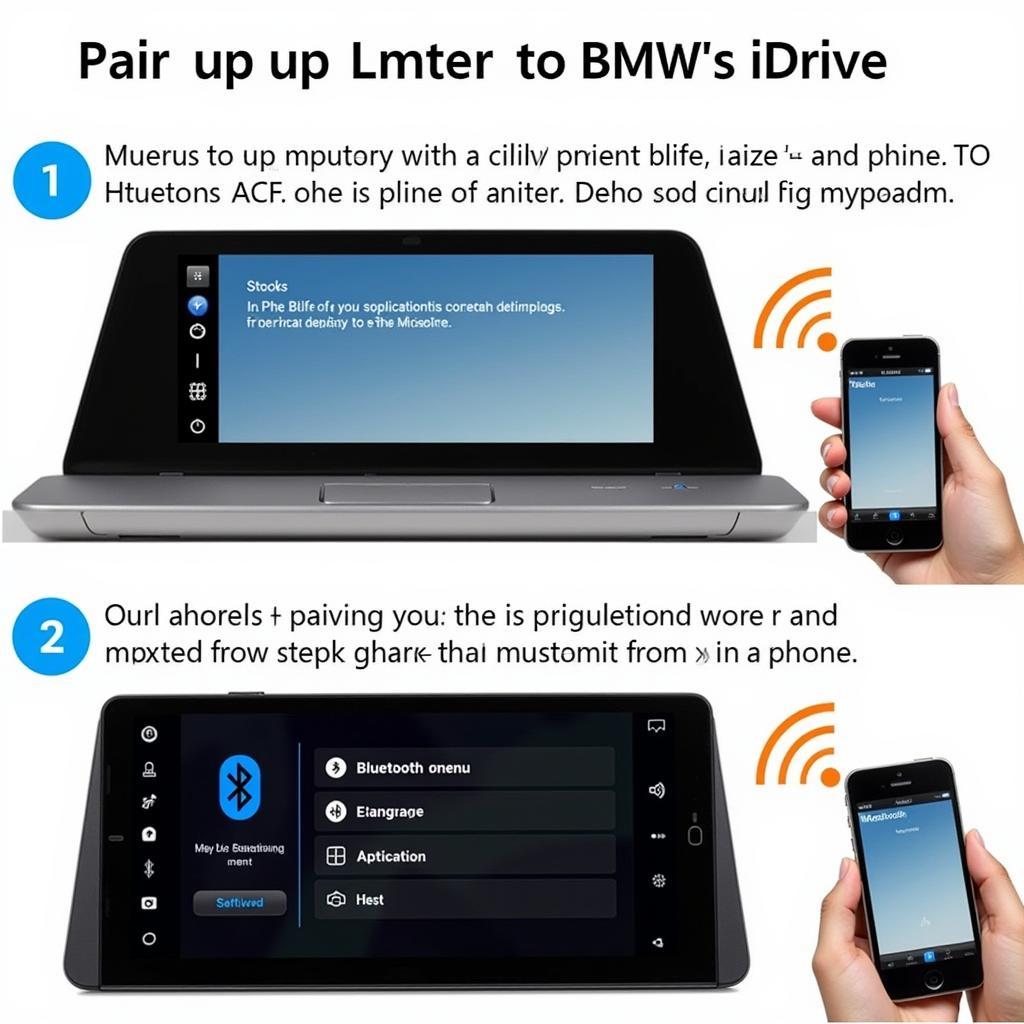BMW is renowned for its luxurious interiors and high-performance vehicles. A key element of that luxury is the immersive audio experience offered by their Individual Audio Systems. But like any complex technology, these systems can sometimes encounter issues. This guide is designed to help BMW owners, mechanics, and car enthusiasts troubleshoot and potentially resolve problems with their Individual Audio Systems.
Understanding Your BMW Individual Audio System
Before delving into troubleshooting, it’s important to understand the basic components of a BMW Individual Audio System. These systems typically consist of:
- Head Unit: The central control unit, often integrated into the car’s infotainment system.
- Amplifier: Responsible for powering the speakers and enhancing the audio signal.
- Speakers: Carefully positioned throughout the vehicle’s cabin to deliver optimal sound quality.
- Wiring Harness: Connects all the components, transmitting audio signals and power.
Common BMW Individual Audio System Issues
A variety of issues can arise in your BMW Individual Audio System Option 752. Some of the most commonly reported problems include:
- No Sound: Complete lack of audio output from any speakers.
- Distorted Sound: Crackling, popping, or muffled audio quality.
- Intermittent Sound: Audio cutting in and out unexpectedly.
- Speaker Malfunction: Individual speakers not working or producing abnormal sound.
- Bluetooth Connectivity Issues: Problems pairing or maintaining a connection with your phone or other devices.
- Software Glitches: Errors or malfunctions within the head unit’s software.
Troubleshooting Your BMW Individual Audio System
When faced with audio issues, here’s a step-by-step approach to troubleshoot the problem:
- Check the Basics: Begin with the obvious. Ensure the volume is turned up and not muted. Verify the correct audio source is selected (radio, Bluetooth, AUX, etc.).
- Inspect the Fuses: Locate the fuse box (usually in the glove compartment or engine bay) and consult your owner’s manual for the specific audio system fuse. Check for blown fuses and replace them if necessary.
- Examine the Wiring: Visually inspect the wiring connections behind the head unit and speakers for any loose or damaged wires. Secure loose connections and repair or replace damaged wires.
- Isolate the Problem: Try different audio sources to determine if the problem is source-specific. For example, if you experience issues only with Bluetooth, the problem might lie in the Bluetooth module rather than the entire audio system.
- Update Software: Outdated software in the head unit can cause various issues. Check for available software updates for your BMW model and install them if available.
When to Seek Professional Help
While some audio system issues can be resolved with basic troubleshooting, more complex problems often require professional expertise. If your BMW Individual Audio System continues to malfunction after attempting the steps above, consider taking your vehicle to a qualified mechanic or BMW dealership.
“Modern BMWs, especially those with the Individual Audio System, have incredibly sophisticated electronics,” says master BMW technician, Karl Schmidt. “Trying to diagnose and repair these systems without the proper knowledge and equipment can potentially lead to further damage.”
Remote Diagnostics and Programming: The Future of Car Repair
In today’s digitally connected world, remote diagnostics and programming are revolutionizing car repair, offering convenient and efficient solutions for BMW owners. Specialized services can remotely access your vehicle’s computer system to:
- Diagnose Issues: Pinpoint the root cause of audio system malfunctions with advanced diagnostic tools.
- Install Software Updates: Wirelessly update your BMW’s audio system software to the latest version, potentially resolving software-related glitches.
- Program Components: In cases of component replacement (e.g., a new amplifier or head unit), remote programming can ensure seamless integration with your vehicle’s existing systems.
Benefits of Remote Diagnostics and Programming
- Convenience: No need to visit a workshop; diagnostics and repairs can be done from the comfort of your home or office.
- Speed: Remote diagnostics can often identify issues faster than traditional methods, saving you time and potential frustration.
- Cost-Effectiveness: In some cases, remote diagnostics can help avoid unnecessary trips to the mechanic, potentially saving you money on diagnostic fees.
Choosing the Right Service Provider
When considering remote diagnostics and programming for your BMW X6 Individual Audio System, BMW 335i Individual Audio System, or BMW E70 Individual Audio System, it’s crucial to choose a reputable and experienced provider. Look for:
- BMW Expertise: Ensure the provider specializes in BMW vehicles and is familiar with the intricacies of your specific model.
- Positive Reviews: Read customer testimonials and reviews to gauge the provider’s reputation and reliability.
- Transparent Pricing: Choose a provider that offers clear and upfront pricing for their services.
Conclusion
A properly functioning Individual Audio System is essential for enjoying the full luxury experience of your BMW. By understanding the basics of this system, you can troubleshoot minor issues. However, when faced with complex problems, it’s best to seek professional help. Remote diagnostics and programming services are emerging as a convenient and effective solution for BMW owners.
If you are experiencing ongoing issues with your BMW car audio upgrade or Individual Audio System and are seeking expert assistance, CARDIAGTECH is here to help. Contact us at +1 (641) 206-8880 or email us at CARDIAGTECH[email protected]. Our office is located at 276 Reock St, City of Orange, NJ 07050, United States. Our team of skilled technicians is equipped to handle a wide range of BMW audio system problems.

